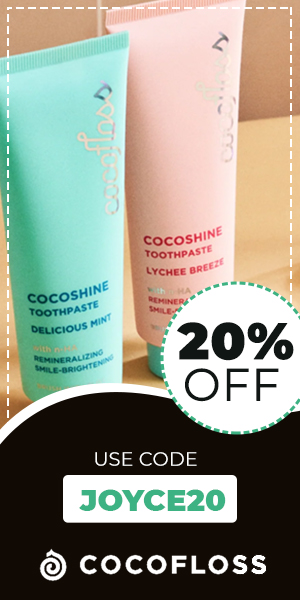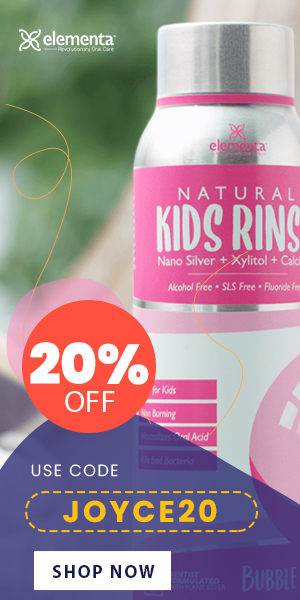Roof of mouth peeling is when the top layer of the oral mucosa—the soft tissue lining the roof of your mouth—starts to slough off. While it can happen from time to time and be quite normal, it could also point to a deeper issue if it happens frequently or comes with other symptoms.
When we talk about peeling in the roof of the mouth, we are discussing the shedding of the superficial layer of cells. This is part of the mucous membrane that lines several parts of the oral cavity and serves as a protective barrier. Regular cell turnover is natural, but abnormal peeling signals something might be amiss.
Normal vs. Abnormal Peeling:
- Normal Peeling: Mild and infrequent, often due to temporary irritation or minor trauma.
- Abnormal Peeling: Persistent or severe peeling might indicate a condition that warrants further investigation.
Common Symptoms:
- Burning Sensation: A noticeable stinging or tingling feeling.
- Irritation and Rawness: Discomfort when rubbing the tongue against the affected area.
- Visible Peeling or Shedding: White, flaky skin may become evident.
- Sensitivity to Hot or Acidic Foods: Discomfort upon consuming certain foods or beverages.
8 Common Causes of Roof of Mouth Peeling
Chemical Burns from Food and Drinks

Spicy, acidic, and hot foods are frequent culprits behind roof of mouth peeling. Consuming foods such as hot pizza or citrus fruits can lead to irritation and peeling. When these irritants contact the sensitive mucous membrane, they can cause the superficial cells to burn and slough off.
Common Food Triggers:
- Spicy dishes with ingredients like chili peppers.
- Acidic fruits such as oranges, lemons, and grapefruit.
- Hot beverages and foods like coffee or freshly baked bread.
Allergic Reactions to Foods or Dental Products
Allergic reactions can sometimes manifest as peeling in the roof of your mouth especially when triggered by certain foods or dental products. Food allergies, such as those to nuts or shellfish, can lead to an array of symptoms, including oral peeling.
When the body identifies these foods as harmful, it reacts by releasing chemicals like histamines. This can irritate the oral mucosa, causing discomfort and other issues.
Food Allergies Include:
- Nuts: Peanuts, almonds, and walnuts.
- Shellfish: Shrimp, crabs, and lobsters.

When it comes to dental products, allergies can arise from specific ingredients found in toothpaste and mouthwashes. A common culprit is sodium lauryl sulfate (SLS), a foaming agent that can dry out and irritate the mouth lining, leading to peeling.
Other Common Irritants in Dental Products:
- Artificial flavorings or colorings
- Alcohol-based mouthwashes
Medication Side Effects
Mouth peeling can sometimes be a reaction to medication. Some medicines, like NSAIDs (non-steroidal anti-inflammatory drugs), chemotherapy drugs, and antihistamines, can cause dry mouth and peeling. This happens because these medications might lower saliva production, which leads to dryness and irritation in the mouth.

Checking for Mouth-Related Side Effects
To determine if a medication might be causing your symptoms, it’s essential to check the medication labels for side effects.
- Read Labels Carefully: Look for terms like “xerostomia” or “dry mouth.”
- Consult with a Pharmacist: They can provide detailed information about potential side effects.
- Use Online Resources: Check for patient information leaflets available online.
Autoimmune Conditions
Oral Lichen Planus is an autoimmune condition that can lead to chronic mouth peeling. It occurs when the immune system attacks the mucous membrane cells, causing a range of symptoms.
- Common Symptoms: White patches, sores, and increased sensitivity in the mouth.
- Management Tips: Consult with a healthcare provider for appropriate treatment options.
Pemphigus Vulgaris
Another condition to be aware of is Pemphigus Vulgaris, a rare autoimmune disorder that can cause severe blistering and peeling in the mouth.
- Symptoms to Watch: Painful blisters, oral sores, and extensive peeling.
- Seek Immediate Care: Early diagnosis and treatment are critical in managing this condition effectively.
Fungal and Viral Infections
Fungal and viral infections are common culprits in causing peeling in the mouth.
Oral Thrush (Candida Infection)
Oral thrush is a fungal infection caused by an overgrowth of Candida yeast. This condition often results in peeling, alongside white patches and redness in the mouth. It can be uncomfortable but is treatable with antifungal medications.
Common symptoms include:
- White patches that resemble cottage cheese.
- Soreness or a burning sensation in the oral cavity.
- Difficulty swallowing or an altered taste.
For more detailed guidance on managing oral thrush that won’t go away, we have a comprehensive guide available to help you.
Herpes Simplex Virus (HSV)
The Herpes Simplex Virus can lead to painful blistering and peeling on the roof of the mouth. HSV is a viral infection that typically causes cold sores but can affect the oral mucosa.
Look for symptoms such as:
- Blisters or open sores around the mouth.
- Tingling or itching prior to blister formation.
- Recurrent outbreaks triggered by stress or a weakened immune system.
Dehydration and Dry Mouth
Dehydration and a dry mouth can significantly impact oral health, leading to discomfort and peeling.

When the body is dehydrated, it lacks moisture in vital areas, including the mouth. This can make the oral mucosa more susceptible to damage and peeling. Drinking plenty of water is crucial to keep the mouth’s environment balanced and healthy.
Saliva plays a vital role in protecting and nourishing oral tissues. It helps in cleansing the mouth, digesting food, and keeping tissues moist. When saliva production is reduced, it can result in dryness and subsequent peeling.
Causes of Dry Mouth:
- Smoking: Nicotine can dry oral tissues.
- Alcohol Consumption: Alcohol is a drying agent that can affect saliva production.
- Medications: Many medications, such as antihistamines and antidepressants, list dry mouth as a side effect.
- Aging: Natural aging can decrease saliva production, leading to dryness.
Smoking and Tobacco Use

Tobacco products are notorious for causing several oral health issues. Smoking can lead to damage of the oral lining, resulting in peeling, irritation, and dryness. The chemicals in tobacco products not only reduce saliva production but also irritate the sensitive mucous membranes in the mouth, exacerbating these effects.
- Irritants in Tobacco: Nicotine and tar are common irritants.
- Saliva Reduction: Smoking can lead to reduced saliva, increasing dry mouth symptoms.
- Inflammation: Regular tobacco use can trigger chronic oral inflammation.
Reducing Tobacco Use
Taking steps to reduce or quit smoking can significantly improve your oral health. Here’s how you can protect your mouth:
- Seek Support: Contact healthcare providers for guidance and resources.
- Use Nicotine Replacements: Consider using patches, gum, or lozenges to ease the transition.
- Stress Management: Engage in activities that help reduce stress, reducing the urge to smoke.
Physical Trauma
Everyday activities, such as eating, can sometimes lead to physical trauma in the mouth. Consuming hard or rough foods like crusty bread or chips can cause abrasions and burns on the roof of the mouth, resulting in peeling. Similarly, drinking hot beverages without allowing them to cool can inadvertently burn the delicate oral tissues.
- Avoid Hard/Sharp Foods: These can scratch and damage the oral lining.
- Be Cautious with Temperatures: Always test the temperature of hot foods and drinks before consuming.
- Use Protective Measures: Consider using a mouthguard if you’re prone to grinding teeth or eating rough foods.
How to Treat Roof of Mouth Peeling
Addressing the issue of a peeling roof of the mouth begins with recognizing potential treatments. Here are some at-home remedies and medical treatments to help move towards better oral health.
Rinsing with Salt Water
A saltwater rinse can be an effective way to soothe irritation. This natural remedy enhances healing by reducing bacteria and inflammation. Here’s how to prepare a saltwater rinse:
- Mix 1 teaspoon of salt in a glass of warm water.
- Swish around the mouth for 30 seconds and spit it out.
- Repeat this process 2-3 times daily for best results.
Avoiding Irritants
Steer clear of spicy, acidic, and overly hot foods to give your mouth a chance to heal. Certain foods can aggravate oral tissues, so it’s wise to avoid:
- Citrus fruits like oranges and lemons
- Vinegar-based foods or dressings
- Chili peppers and other spicy ingredients
Staying Hydrated

Hydration plays a vital role in preventing dry mouth and subsequent peeling. Drinking plenty of water can significantly improve oral health. Here’s how to manage dehydration:
- Keep a water bottle handy to remind yourself to drink frequently.
- Consider consuming electrolyte-rich beverages if needed.
- Pay attention to signs of thirst and respond promptly to maintain balance.
If at-home remedies prove ineffective or if the condition worsens, it’s imperative to seek professional guidance. A healthcare provider can assess the situation and may prescribe stronger medications or treatments tailored to your specific needs.
Topical Medications
For those experiencing oral discomfort, topical medications offer targeted relief. Prescription gels and ointments, including corticosteroids, can effectively reduce inflammation and promote healing. These treatments are typically applied directly to affected areas, providing focused care where it’s needed most.
- Use as Directed: Always follow the prescription instructions.
- Gentle Application: Apply carefully to avoid further irritation.
Treating Underlying Infections
Addressing the root cause of an oral issue often involves tackling infections like oral thrush or HSV. Antifungal or antiviral treatments are essential in these cases and help clear infections, preventing further complications:
- Complete the Full Course: Ensure full dosage to effectively eliminate the infection.
- Monitor Progress: Keep tabs on symptom improvements, contacting your healthcare provider if needed.
Allergy Testing and Management
Allergens in your diet or dental care routine might be contributing to oral health issues. Engaging in allergy testing can pinpoint these irritants. Here’s how to manage them effectively:
- Identify Allergens: Through professional testing, determine which substances to avoid.
- Adjust Diet and Products: Eliminate or replace problematic items.
Before using any medical treatment, it’s essential to seek advice from a healthcare professional. Self-treating conditions without proper guidance can lead to complications or ineffective results. A dentist or doctor can properly diagnose the condition and recommend the most appropriate treatment based on your individual health needs. Always consult a professional to ensure safe and effective care for your oral health.
Preventing Roof of Mouth Peeling
Good Oral Hygiene Practices
Brushing and Flossing Regularly
Practicing good oral hygiene is essential for maintaining a healthy mouth. Regular brushing and flossing help remove plaque and prevent irritation. Opt for a toothbrush with soft bristles and remember to use gentle strokes to avoid damaging sensitive gum tissues.
SLS-Free Toothpaste
For those with sensitive mouths, consider using SLS-free toothpaste. Sodium lauryl sulfate can irritate oral tissues, so choose products labeled as such to reduce potential discomfort.
Dietary Adjustments
Avoid foods that can cause chemical burns by reducing your intake of acidic and spicy foods. Instead, focus on incorporating hydrating and soothing foods like yogurt, cucumbers, and melons into your meals.
Avoiding Common Triggers
Managing Food Allergies and Sensitivities
Identifying trigger foods is critical for avoiding allergic reactions that can lead to irritation and peeling. A personalized plan based on allergy testing can help you easily manage your sensitivities.
- Identify Trigger Foods: Through testing and observation.
- Modify Diet: Eliminate problematic foods to reduce risk.
Quitting Smoking

Smoking cessation can dramatically improve oral health. By quitting smoking, you prevent further damage, reduce dry mouth symptoms, and promote healthier saliva production.
- Seek Help: Use resources like counseling or cessation support groups.
- Consider Alternatives: Such as nicotine patches or lozenges.
Staying Hydrated
Maintaining optimal hydration supports overall oral health. Regular water intake and using a humidifier can keep your mouth moist and help ward off dryness.
- Drink Water Regularly: Carry a bottle with you.
- Use a Humidifier: Especially during dry seasons to maintain moisture.
When to See a Dentist or Doctor

Recognizing when to seek professional help is crucial for maintaining optimal oral health. Here are key points to consider:
- Persistent peeling lasting more than two weeks: This indicates it’s time to consult a healthcare provider, as it may signal a deeper issue requiring medical attention.
- Be alert for accompanying symptoms: Watch for sores, bleeding, or extreme pain, as these may need immediate intervention to prevent complications.
- Conditions that may require specialist referral: Certain issues, like autoimmune disorders or significant infections, might necessitate seeing a specialist.
A dentist or doctor can provide insight and guide you toward appropriate treatment strategies. Allow your dentist to perform a full evaluation and share detailed information about your oral condition.
Key Takeaways
- Identify and Treat Underlying Infections: Address infections like oral thrush or HSV with appropriate medications, completing the full course to avoid complications.
- Monitor Allergies: Use allergy testing to identify and manage food or product sensitivities that may contribute to oral issues.
- Maintain Oral Hygiene: Regular brushing, flossing, and using SLS-free toothpaste are essential for preventing irritation.
- Dietary Adjustments: Avoid triggers such as acidic, spicy foods, and incorporate soothing, hydrating foods.
- Quit Smoking and Stay Hydrated: Both are critical for healthy saliva production and reducing oral tissue irritation.
- Recognize When to Seek Help: Persistent symptoms or complications may require professional intervention, including specialist referrals.
For more dental tips and updates, follow us on social media at @joycethedentist.





















